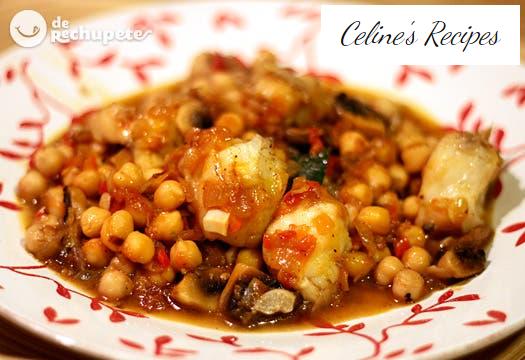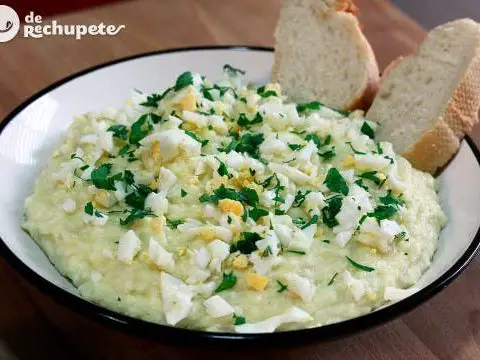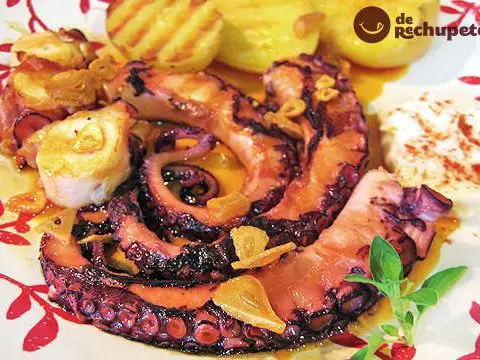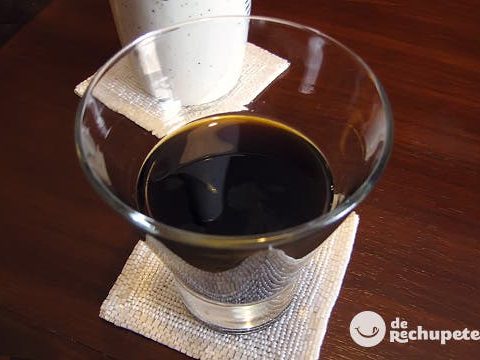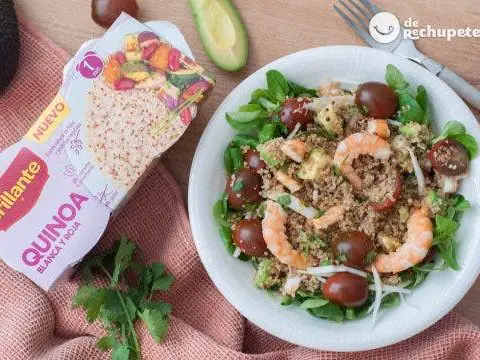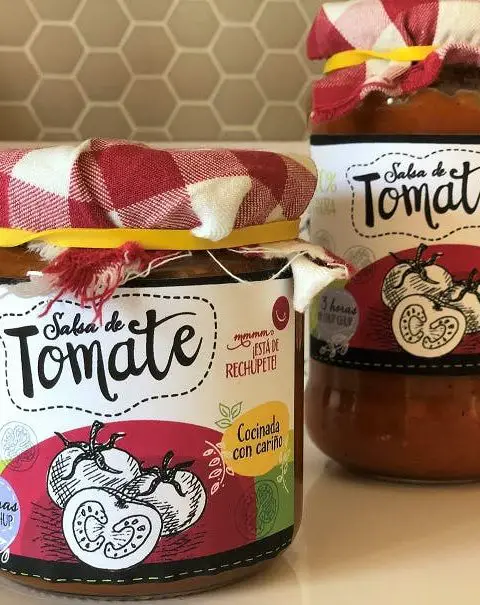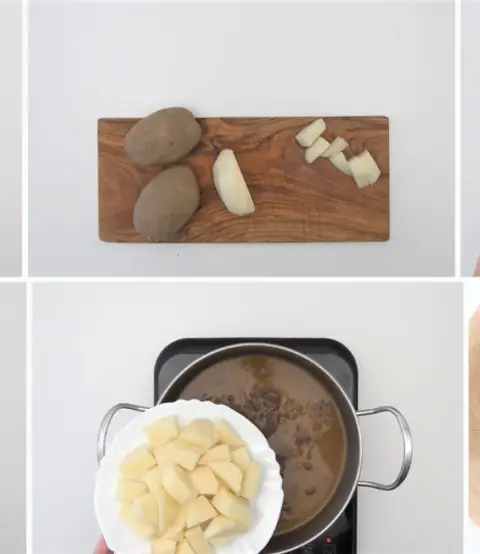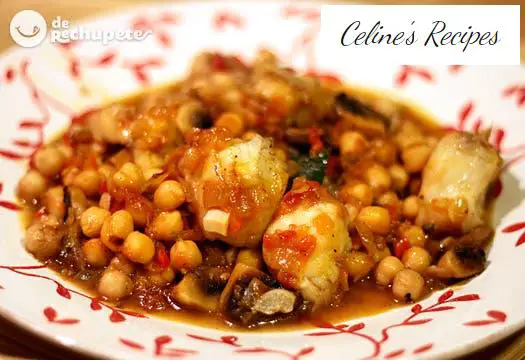
Info.
- Half
- 60 minutes
- For 6 people
- 3.6 € / person
We are in the middle of the mushroom season and today’s proposal is a chickpea stew “Sea and mountain” , which by itself only takes away the cold. The sea contributes with monkfish and the mountain with legumes and mushrooms, this time with thistle and some mushrooms (we have not had any luck this time). The good thing is that you have these types of products all year round, so you can prepare it when you feel like it.
“The sea and mountains” surely dates back to the time of barter in which the exchange of products was very common, in the markets of the towns or even in private houses the fish or shellfish of the day was exchanged for products from the garden or whatever was at hand. They say that its origin is in Catalan gastronomy, although it has been practiced in one way or another throughout the Spanish coast. These dishes arise in an effort to combine the rich gastronomic heritage of a region with a large number of types of crops and seafood. Dishes as traditional and rich as chicken with prawns or rabbit with scampi combine the best of both worlds, and have given rise to other more risky and modern combinations such as the bourguigone snail farcellet with espardeñas . This is my humble contribution to this type of cuisine, in this blog you can find more recipes such as the mussel and bacon empanada or the classic stuffed and onion squid . Today’s recipe is not a classic, but rather combines the flavors of the Galician sea with the vegetables from the garden and mushrooms. As a curiosity … do you know that the Americans call the “Sea and mountains”, ” surf and turf “?
I leave you with the first mushroom recipe of this season, soon I will surprise you with a boletus risotto that Encarna collected from the Sierra de Madrid has given me (I would tell you the area, but I think I would not invite myself to eat on Sundays, it remains in secret). Take advantage of the bridge to go up the mountain to look for mushrooms, but take only those you know, with care that we do not want scares. Enjoy the best of Autumn!
Before cooking chick peas
You can find chickpeas as dried or cooked legumes, in cans or preserves and in addition to various sizes and qualities. I like Castilian chickpeas of large size, spherical shape and a characteristic yellowish color. I recommend using dry chickpeas because they allow you to control the salt point of the stew by avoiding the treatments that the packaging brings, although in case of need or lack of time, canned chickpea is a good option.
- In case of deciding for the dried chickpeas, the day before we put them in warm water with a teaspoon of baking soda or a handful of salt and leave them to soak for about 12 hours overnight. It is important to wash them afterwards to remove possible impurities and that no spoiled chickpea is strained that can spoil a tooth, I say from experience. We will only have to drain and set aside until the time to prepare the stew.
- If you are going to use them already cooked (as in this recipe, since it did not have much time), wash them very well without leaving any of the gelatin that surrounds the chickpea and add them at the end of cooking the stew, just so that they are well impregnated of the flavor of the rest of the ingredients. I must admit that this type of chickpea already cooked and packaged in a glass jar saves a lot of time in the kitchen.
Preparation of monkfish and its broth
- We choose a monkfish that is to our liking. In my case, the fishmonger is very nice and she always cleans it for me. Separate the head and chop it, it also leaves my back quite well, perfect for later manipulating at home. Just in case we finish cleaning the loin removing possible ribs that are stuck to the meat. We cut into slightly thick slices, remember that this fish releases a lot of water and we want us to have nice portions. Season with salt and pepper and prepare to pass in the casserole.
- We go with the broth that is very simple, we choose a large casserole where we add the head and the central bones of the fish. Add about 2 liters of water and bring to a boil.
- When we see the first bubbles, we go down to low heat and cook for 20 minutes (minimum). We are not going to spend time cooking because if the bones are broken they can add a bad taste to the fumet. Occasionally we remove the foam that is forming on the surface. Strain and reserve for the stew.
Preparation of chickpeas with mushrooms and monkfish
- Chop the onion, peppers and garlic. The best thing is that we cut them into small pieces so that they dissolve in the cooking. In the end we will hardly notice any texture of any of the ingredients but its flavor. As many people do not like to find garlic on the plate you can pour it whole and remove it halfway through cooking.
- We will do the same with the mushrooms but in larger pieces, because as they have a lot of water they will stay in nothing and then we want them to be seen on the plate.
- We wash and chop the tomatoes in two parts, better if they are very ripe. We are going to use the grated pulp of the same (without skin, as you can see in the photos), so we will have a perfect sofrito.
- In a saucepan we pour a good jet of extra virgin olive oil. When it is hot we add the pieces of monkfish and the garlic. We poach a little, with 3 minutes is more than enough, we just want to seal the fish and that the garlic does not burn us. It will release a lot of juice that will be combined with the oil, this will be the base where we will make our sauce for the stew. We remove the monkfish and garlic to a bowl that we will use at the end of cooking.
- In the same pot add the onions and peppers. We fry everything for 10 minutes so that the flavors mix well. We add the mushrooms (mushrooms and mushrooms of your choice) and the bay leaves. We also fry for 5 more minutes.
- Add the tomato pulp that we have reserved and combine well with a wooden spoon, quickly and over high heat, it will start to evaporate immediately. Season with salt and pepper and drain the chickpeas already drained (in case they are the ones we have soaked, if we don’t wait until almost the end of cooking). We stir again so that everything comes together well (3 minutillos).
- We cover with the monkfish broth (important that it is cold so that it begins to boil slowly). When it begins to boil, lower the heat so that it slows down and does not break the vegetables. I have only used a liter of broth and a low cooking time (15 minutes) because the chickpeas were preserved and does not need much cooking. In case they are dry legumes and depending on the size of the chickpea, we will need much more cooking, more liquid and time (at least 60 minutes, we can test how long the legume is).
- When you have cut the liquid in half, try salt and grind.
- At the end of cooking, the last 3-4 minutes, we add the pieces of monkfish (even if you use a good casserole you can remove from the fire because it retains residual heat). We let the flavors come together and we would have it ready our stew to serve on the table.
- To dish the best is a deep dish with the chickpeas topped with a few pieces of monkfish and the mushrooms, that easy. As Enric Campuzano told me on facebook ” Per xuclarse els dits ” (to lick your fingers).
Be sure to enjoy all the recipes for fish and seafood that we have on the blog, I assure you that you will find a lot of ideas to make yours much happier.
